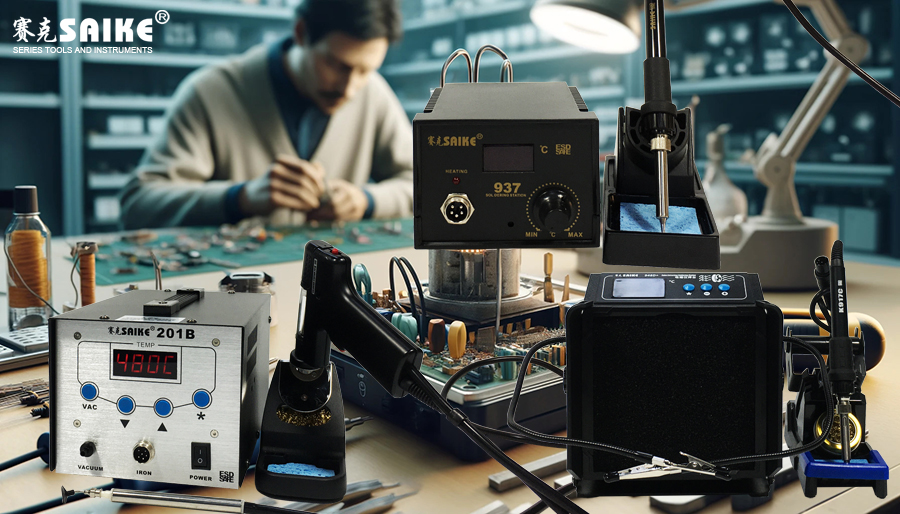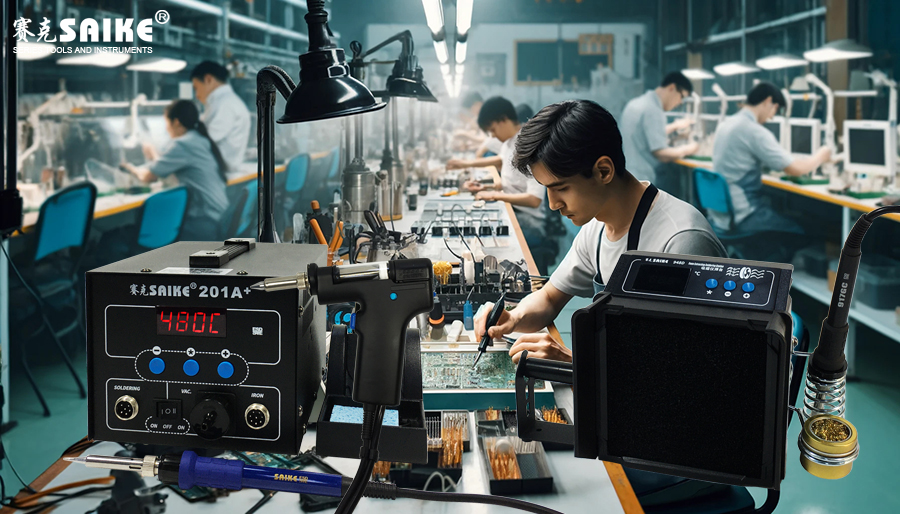
SK-YJ000HT-KP 100005
The soldering station is an essential equipment in soldering processes, and one of its core components is the heating element. The performance of the heating element directly affects the efficiency, soldering quality, and service life of the soldering station. Below is a detailed introduction to the heating element of the soldering station.
I. Composition of the Heating Element
The heating element of a soldering station is typically composed of a heating wire or heating tube. These electric heating elements generate heat when electrified, providing the necessary thermal energy for the soldering process. The heating wire or heating tube is usually made of high resistivity alloy materials, such as nickel-chromium alloy or iron-chromium-aluminum alloy. These materials have high resistivity and good oxidation resistance, enabling them to work stably at high temperatures for extended periods.
II. Working Principle of the Heating Element
The working principle of the heating element is based on the electrothermal effect. When current passes through the electric heating element, due to the element’s resistance, electric energy is converted into thermal energy, causing the heating element to generate heat. This heating process is reversible, meaning that when the current stops, the heating element gradually cools down.
In a soldering station, the heating element is tightly integrated under or inside the soldering platform, allowing the generated heat to be evenly conducted to the platform. Once the platform reaches a certain temperature, soldering operations can be performed on the workpiece placed on it.
III. Performance Characteristics of the Heating Element
1.Efficient Heating: High-quality electric heating elements can quickly heat up and reach the required soldering temperature, thereby improving soldering efficiency.
2.Temperature Stability: The heating element exhibits good temperature stability, maintaining a constant temperature output during long-term operation and ensuring soldering quality stability.
3.Durability: High-quality electric heating elements have a long service life and can withstand frequent heating and cooling cycles without easy damage.
4.Safety: Modern soldering stations’ heating elements are often equipped with overheat protection devices that automatically cut off the power when the temperature exceeds a set value, preventing equipment damage and fire accidents.
IV. Selection and Replacement of the Heating Element
When selecting a soldering station, an appropriate heating element should be chosen based on soldering needs and the working environment. Different soldering station models and specifications may come with heating elements of varying power and sizes. Therefore, when replacing the heating element, it is essential to ensure compatibility between the new element and the soldering station.
Additionally, regularly inspecting and replacing aging heating elements is one of the crucial measures to maintain the soldering station’s performance. Prompt replacement is necessary to ensure soldering quality and safety when the heating element is damaged, aged, or its performance declines.
In summary, the heating element is a critical component of the soldering station, and its performance directly impacts the soldering process’s effectiveness and safety. Therefore, when selecting and using a soldering station, it is essential to fully understand and focus on the heating element’s performance and characteristics to ensure smooth soldering operations.


